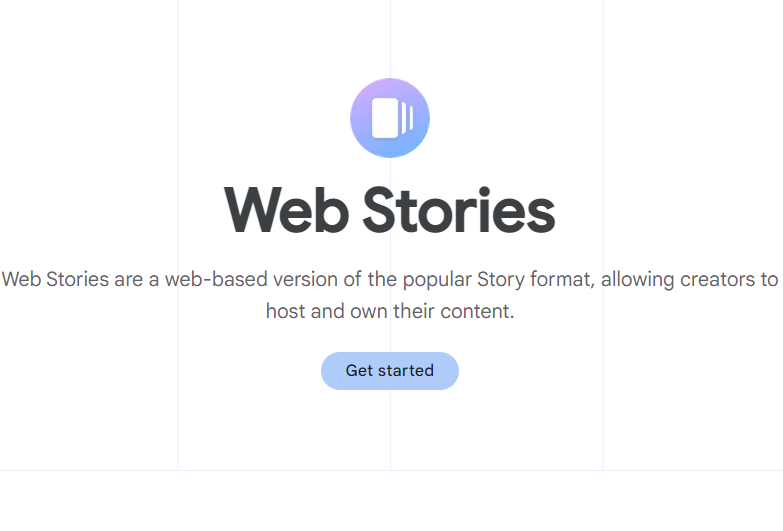Google Web Stories is a content format that was introduced by Google in 2020 to provide a more engaging and interactive browsing experience for users. It is built on the Accelerated Mobile Pages (AMP) technology, which allows for fast-loading and visually rich pages on mobile devices. The Web Stories format provides a unique opportunity for businesses and content creators to showcase their products, services, and stories in a dynamic and visually appealing manner.
In this article, we’ll explore the benefits of using Google Web Stories and how it can be used to optimize your content for mobile devices.
First, let’s take a look at the benefits of using Web Stories.
- Increased Engagement: Web Stories provide an immersive and interactive experience for users. The format allows for the inclusion of animations, videos, images, and other multimedia elements that can be used to bring your content to life. The visual and dynamic nature of Web Stories makes them more engaging than traditional text-based content, which can lead to increased user engagement and longer time spent on site.
- Faster Loading Speeds: As mentioned, Web Stories are built on the AMP technology, which means they load fast on mobile devices. This is crucial, as users are more likely to abandon a page if it takes too long to load. Faster loading times also result in a better user experience and can lead to improved search engine rankings.
- Better Mobile Optimization: With the rise of mobile devices, it’s essential that businesses and content creators have a mobile-optimized experience. Google Web Stories provide a mobile-first format that is optimized for the small screens and touch navigation of mobile devices. This ensures that users have an optimal experience, regardless of the device they are using.
- Improved Visibility: Google has stated that Web Stories will be given priority in its search results, meaning that well-optimized Web Stories have the potential to rank higher in search results than traditional text-based content. This increased visibility can lead to increased traffic and engagement.
So, how can you use Google Web Stories to optimize your content for mobile devices?
- Focus on the User Experience: Web Stories should be designed with the user experience in mind. This means creating content that is visually appealing, easy to navigate, and provides a seamless experience from start to finish. The format allows for the inclusion of a variety of multimedia elements, so be creative and use them to enhance the user experience.
- Make the Most of AMP: As Web Stories are built on the AMP technology, it’s essential to make the most of its features. This means using AMP components to optimize the loading speed of your content and ensure that it is as fast as possible. You should also make use of AMP’s dynamic and interactive elements to create an engaging experience for users.
- Optimize for Mobile: As mentioned, Web Stories are designed for mobile devices, so it’s crucial to optimize your content for these devices. This means ensuring that your content is easily viewable on small screens and that it’s easy to navigate using touch controls. You should also optimize your images and videos for mobile devices, to ensure that they load quickly and don’t take up too much space.
- Use Strong Visuals: Web Stories provide an excellent opportunity to showcase your products, services, and stories in a visually appealing manner. Use strong visuals, including images, videos, and animations, to create an engaging experience for users. This will help to increase user engagement and keep them on your site for longer.
- Make Use of Interactive Elements: Web Stories allow for the inclusion of interactive elements, such as quizzes and polls, which can be used to engage users and provide a more dynamic experience. These interactive elements can be used to provide users with a personalized experience and to gather important information about their preferences and interests. For example, a fashion retailer could use quizzes to help users determine their personal style or a food company could use polls to gather data on consumer preferences for certain ingredients.
- Optimize for Search: Just like any other content format, it’s essential to optimize your Web Stories for search engines. This means using keywords in the title and throughout the content, as well as optimizing images and videos with descriptive alt tags and captions. Additionally, make sure to use structured data to provide search engines with information about your Web Story, such as its title, author, and date published.
- Use Analytics: Analytics is crucial when it comes to optimizing your Web Stories. Use analytics tools to gather data on the performance of your Web Stories and to make informed decisions about future content creation. For example, you can use analytics to determine the average time users spend on your Web Story, the number of views, and the conversion rate. This information can then be used to make improvements to your Web Stories and to ensure that they are providing a high-quality user experience.
In conclusion, Google Web Stories provide a unique and engaging experience for users, and it’s essential for businesses and content creators to make use of this format to optimize their content for mobile devices. With the benefits of increased engagement, faster loading times, better mobile optimization, and improved visibility, Web Stories offer a great opportunity to showcase your products, services, and stories in a dynamic and visually appealing manner. By focusing on the user experience, making the most of AMP, optimizing for mobile, using strong visuals, and making use of interactive elements, you can ensure that your Web Stories are providing a high-quality experience for users.
